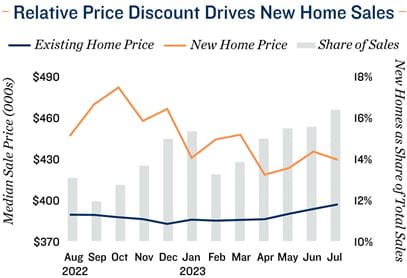eXp Commercial is one of the fastest-growing national commercial real estate brokerage firms. The Chicago Multifamily Brokerage Division focuses on listing and selling multifamily properties throughout the Chicago Area and Suburbs.
Thursday, November 30, 2023
Grand Prairie 2nd
eXp Commercial is pleased to present to the market a fully built-out, free-standing 4,408-square-foot medical/dental office building in Grand Prairie, Texas, centrally located 22 miles southwest of downtown Dallas and 26 miles southeast of downtown Fort Worth. Though the current use is for a dental office, the property is zoned PD267A (commercial development), allowing for a variety of medical and dental uses. The property is owner-occupied and will be vacated at closing, providing an ideal opportunity for another dental practice or any number of medical office users to utilize the property for their practice or an investor who works with medical office tenants to take advantage of an investment opportunity.
Listing Brokers:
Tyson Grona | tyson@tysongronagroup.com | 936.444.3635
Randolph Taylor | rtaylor@creconsult.net | 630.474.6441
https://properties.expcommercial.com/1253332-sale
23-Year High Mortgage Rates Bolstering Apartment Demand

Misaligned New and Existing Home Sales
Trends Depict a Market in Flux
Single-family debt costs eclipse long-standing high point. In the latter half of August 2023, the average 30-year fixed-rate mortgage surpassed 7.2 percent, up about 170 basis points from one year ago and the highest figure in more than two decades. With federal student loan obligations set to resume in October, taking on long-term debt at a 23-year high rate will continue to dissuade prospective first-time homebuyers, in turn bolstering apartment demand. Additionally, elevated mortgage rates deter existing homeowners from listing, providing pricing reinforcement amid a historic shortage of options, especially at the lower end of the cost spectrum. In July 2023, the number of existing homes for sale held about 40 percent below the trailing 10-year same month average. Concurrently, the median price ascended to a 13-month high at $396,700, the fourth-most expensive measure on record.

Gap between new and existing home prices is tightening. While the existing home market has been stalled by insufficient inventory and rising prices, newly-built houses comprise an increasingly large portion of total sales. In July, new homes accounted for roughly 16 percent of overall transactions, compared to a share of about 11 percent in the same month of 2022. This trend correlates with newly-built dwellings becoming comparatively less expensive. The gap between the median sale price of each segment tightened to $32,400 in July, a relative discount that helped push new home sales to a 17-month high. Purchases of newly-built houses are ramping up, yet it has not translated to existing homes coming to market, implying that a portion of this activity stems from first-time homeowners making a direct leap into newly-built houses.
New homes are still not attainable for many first-time buyers. While recent indicators signal that some residents are entering homeownership via a newly-built home, that is not expected to be a long-term trend. From a cost standpoint, new homes still command higher prices than existing options, limiting the number of residents that can afford to buy. Locational factors play a role as well, with many newly-built homes being constructed in outlying areas well distant of city centers and employment hubs.
Developing Trends
Multifamily project starts contract to 22-month low. The apartment sector is enduring historic construction activity at an inopportune time of soft demand, which has pushed up vacancy and curbed rent growth. Early signs of a medium-term development deceleration have begun to emerge, however, as multifamily project starts in July 2023 were at the lowest mark since September 2021. Multifamily permit issuance was also down more than 30 percent year-over-year in July, further hinting at apartment builders starting to tap the brakes. While the nation still faces a housing shortage not set to alleviate in the near term, a thinning construction pipeline could help stabilize the multifamily sector.
Material and insurance costs heighten development hurdles. The average insurance cost per apartment unit rose by 33 percent year-over-year in the second quarter, with several Florida, Texas and California metros noting much larger hikes. These added expenses, alongside the construction cost index jumping to an all-time high in August 2023, are cooling development. Single-family homebuilder confidence also dipped to a three-month low.
-16.3% |
31.5% |
| Year-Over-Year Change in Existing Home Sales in July | Year-Over-Year Change in New Home Sales in July |
Sources: Marcus & Millichap Research Services; Capital Economics; Freddie Mac; Moody’s Analytics; Mortgage Bankers Association; National Association of Home Builders; National Association of Realtors; RealPage, Inc.; U.S. Bureau of Labor Statistics; U.S. Census Bureau; Wells Fargo
Source: 23-Year High Mortgage Rates Bolstering Apartment Demand
https://www.creconsult.net/market-trends/23-year-high-mortgage-rates-bolstering-apartment-demand/Wednesday, November 29, 2023
Insurance prices per apartment unit rise 33% YoY

Insurance costs are rising at an accelerated rate for commercial real estate, up 33% year-over-year, per apartment unit to $180, according to Marcus & Millichap’s new report.
Insurance now accounts for more than 8% of an owner’s quarterly per-unit operating expenses, nearly double the share from five years ago.
Property tax and payroll costs combined rose 9% in the past year and the national average effective rent rose 4%.
If that’s not difficult enough, providers are concurrently implementing new policy limitations to decrease their exposure, especially for multifamily hotbeds in Florida, California, and Texas.
In Houston and Fort Worth, the average cost to insure a unit rose more than 40% year-over-year in the second quarter, according to the report.
“This disparity and expectations for further operating cost increases and rent growth moderation will broadly influence development proposals, property valuations, and investors’ acquisition criteria moving forward,” Marcus & Millichap said.
“Developers react by paring back project starts. Spiking insurance premiums, along with elevated labor, materials and financing costs, are making it more difficult for developers to underwrite ground-up developments.
“This dynamic has the potential to facilitate a broad pullback in U.S. project starts, a trend that already appears to be taking shape” given that the value of all commercial starts fell 11%, while the number of permits issued for new multifamily projects in June represented the lowest level since late 2020.
Providers leaving key markets is the next shoe to drop.
In Florida, customers’ average rate hike could rise by 12%, given that Farmers Insurance’s departure will pressure the state-run Citizens Property Insurance Corporation. Citizens expects to have up to 1.7 million policies by year-end and in June, it requested the maximum premium increase allowed.
In California, State Farm and Allstate’s exodus may impact renewals in addition to new policies, a potential concern for owners of older buildings requiring seismic upgrades and assets in wildfire zones.
Multiple severe thunderstorms threw a vicious punch at the commercial real estate industry in the first half of 2023, leaving it with the highest spike in premiums at 18.3%.
All commercial real estate asset classes are seeing rising premiums, according to a recent report from The Council of Insurance Agents & Brokers, as reported by GlobeSt.com.
Repeated severe weather the past half-year left CRE with the highest spike in premiums at 18.3%, tops of any industry category.
Source: Insurance prices per apartment unit rise 33% YoY
https://www.creconsult.net/market-trends/insurance-prices-per-apartment-unit-rise-33-yoy/Tuesday, November 28, 2023
Commercial Real Estate Loan Modifications Quadruple, With Multifamily Leading The Way

Modifications on commercial real estate-related collateralized loan obligations spiked in the second quarter to $4B as more property owners sought refuge from encroaching maturity dates and rising interest rates.
That figure is a 300% increase from the first quarter, when $1B in CLOs were modified, according to DBRS Morningstar.
The modifications represent a number of different strategies to buy time for landlords, Morningstar said in its quarterly CRE CLO report. Those include increasing a loan balance, changing an interest rate, deferring contractual payments, extending a maturity date or allowing a borrower to access existing reserves.
“In most cases, lenders appear to employ modification strategies to assist borrowers in achieving business plans that are behind schedule,” the Morningstar report says.
Modifications on CLOs backing apartment properties grew to 10.6% quarter-over-quarter with an unpaid loan balance of $5B, according to the report.
Apartment owners in the Sun Belt in particular are feeling the pinch, Bloomberg reported, as a glut of new supply hits the market, denting rent growth as loans approach renewal.
Office and retail modifications grew at a slower pace, but office still has a higher share than multifamily, with 14.5% of office-backed CLOs modified in Q2.
The surge in modifications doesn't point to immediate collapse, according to DBRS Morningstar Vice President Stephen Koehler, who oversees CRE CLOs.
“It’s kind of a ‘Keep your eyes on this. Don’t forget about this,’ but not like a siren going off,” Koehler told Bloomberg.
CLO delinquencies edged up, according to Morningstar. In June 2023, the overall delinquency rate for CRE CLOs came in at 3.14%, a 15-basis-point increase from 2.99% in March but up 2.25% from a year earlier.
Special servicing on CLOs, however, dipped by 27 basis points from Q1, the first quarterly decrease in more than a year, Morningstar said.
Source: Commercial Real Estate Loan Modifications Quadruple, With Multifamily Leading The Way
https://www.creconsult.net/market-trends/commercial-real-estate-loan-modifications-quadruple-with-multifamily-leading-the-way/1120 E Ogden Ave
eXp Commercial is pleased to present to market 1120 E Ogden Avenue, a highly visible 10,860 square foot retail-office property on 1.26 acres in desirable affluent Naperville, Illinois, along the I-88 E-W corridor approximately 28 miles west of Chicago. The property is currently owner-occupied and will be fully vacated shortly after closing, with the seller seeking approximately 60 days of post-closing possession. Flexible B3 zoning allows for a number of retail and office uses, ideal for an investor, owner-user, or redevelopment of the property.
Listing Broker: Randolph Taylor | rtaylor@creconsult.net
https://www.creconsult.net/retail-office-for-sale-1120-e-ogden-ave-naperville-il-60563/
Monday, November 27, 2023
Mastering the Art of Expensing & Accelerating Depreciation Course

Join eXp Commercial's Cost Segregation Partner CSSI for a comprehensive exploration of the intricate world of cost segregation and gain valuable insights to demystify the application of Tangible Property Regulations, resulting in significant reductions in your taxable income.
COURSE DESCRIPTION
Prepare for a comprehensive exploration of the intricate world of cost segregation and gain valuable insights to demystify the application of Tangible Property Regulations, resulting in significant reductions in your taxable income.
Unlock the artistry behind these regulations to maximize their advantages. We will dissect the most prevalent depreciation and expensing opportunities for clients who own and develop commercial real estate and short-term rentals.
Whether it's Commercial Buildings, Apartment Complexes, Long-Term or Short- Term Rentals, Disposition of Materials, or Interior Renovations, each presents unique opportunities for expensing and accelerating depreciation, provided you have a foundational grasp of the regulations and access to the requisite cost data.
Rather than drowning in the complexities of regulations as is often the case in presentations, we will utilize real-world scenarios encountered by building and short-term rental owners to assist you in crafting a strategy for expensing and accelerating depreciation, including leveraging Bonus Depreciation.
An integral aspect of our sessions is addressing your specific queries to empower you in confidently applying these regulations to meet your client's precise requirements.
Hundreds of Tax Professionals have consistently rated CSSI's team of presenters and content as excellent. We cordially invite you to join us for an engaging 1.5- hour discussion filled with strategic insights and ample time for addressing your inquiries. CPE credits are available for CPAs through our NASBA certified provider.
LEARNING OBJECTIVES
By the end of this lesson, attendees will be able to discuss advanced depreciation and expensing strategies related to cost segregation, including:
· Common scenarios for expensing and accelerating depreciation using the Tangible Property Regulations and Cost Segregation
· Advantages of Short-Term Rentals
· When to use Bonus Depreciation vs Section 179a
· Renovation Depreciation -- When to use Partial Asset Disposition (PAD) and Qualified Improvement Property (QIP)
· Grouping Opportunities
REGISTRATION INSTRUCTIONS
· You must register for and attend the entire session to receive CPE credit.
· A course evaluation must be completed to receive CPE credit.
· Group attendance will not be recognized. Each attendee must be logged in individually to receive credit.
Cost:
None
Subject Area:
Tax
CPE Credits:
1.5 Hours
Who Should Attend:
CPA - small firm
CPA - medium firm
CPA - large firm
Instruction Method:
Live Webinar
Time:
10:00 am Central time
Instructors:
David Deshotels
Robert Taylor
Webinar Date:
December 5, 2023 | 10:00 am Central
https://www.creconsult.net/events/mastering-the-art-of-expensing-accelerating-depreciation-course/
Multifamily Permits Down 32.2% From a Year Ago

The pipeline for multifamily development has slowed due to continued challenges of higher interest rates and difficulty securing funding, and that includes filings of permits, according to RealPage.
Specifically, the seasonally adjusted annual rate for multifamily permitting in July of this year fell 32.2% from a year ago, according to the latest release from the Census Bureau. July’s annual rate was almost unchanged from June and represents the lowest since October of 2020.
What’s more, the more volatile multifamily starts rate almost matched that of permitting with July’s SAAR of 460,000 units equaling June’s starts rate. The annual rate of multifamily starts was about the same as a year ago.
Multifamily completions, meanwhile, plunged 38.8% from June to 297,000 units, down 23.3% from last July’s completion rate. The number of multifamily units authorized but not started decreased only 0.7% for the month to 133,000 units, down 10.7% from a year ago.
When looked at in different regions of the country, all four saw declines, with the biggest in the Northeast, which fell 42.7% to 47,0000 units. The South saw permitting slow 34.6% to 233,000 units; the Midwest was down 29.9% to 54,000 units and the West dropped 23.1% to 130,000 units. Starts were up only in the South from last year. Digging deeper, New York led the country in multifamily permitting, totaling 24,818 units through July or down by more than 16,000 units from a year ago. Houston followed in second place with 23,325 units permitted, an increase of 914 units from last year but 1,856 fewer than last month.
Single-family permitting and starts, by contrast, are inching up after bottoming at the beginning of this year. The SSAR for single-family permitting hit 930,000 units and increased slightly at 0.6% from June and 1.3% greater than a year ago. It was also a significant 24.3% higher than in January.
Single-family starts were also up to 983,000 units in July, up 6.7% from June and 9.5% up from last July. The starts rate improved almost 20% from its low point earlier in the year.
Single-family completions were up, too, 1.3% in July with the annual rate reaching 1.018 million units, up 1.4% for the year. And single-family units authorized but not started remained unchanged at 140,000 units from 141,000 units in June, down 5.4% from last year.
Source: Multifamily Permits Down 32.2% From a Year Ago
https://www.creconsult.net/market-trends/multifamily-permits-down-32-2-from-a-year-ago/Multifamily Investment Opportunity – Showings Scheduled Join us for a showing of two fully occupied, cash-flowing multifamily properties ide...
-
🚨 Auction Alert 🚨 I’m excited to announce that a prime 17.25-acre residential development property at 150 Harbor Club Dr, Hobart, IN, is g...
-
Just Listed: Golf Sumac Medical Offices | Des Plaines IL Price: $3,900,000 SF: 35,245 Stories: 3 Occupancy: 82.3% Cap Rate: 9.63% * Stabiliz...
-
🚨 Auction Alert 🚨 I’m excited to announce that a prime 17.25-acre residential development property at 150 Harbor Club Dr, Hobart, IN, is g...